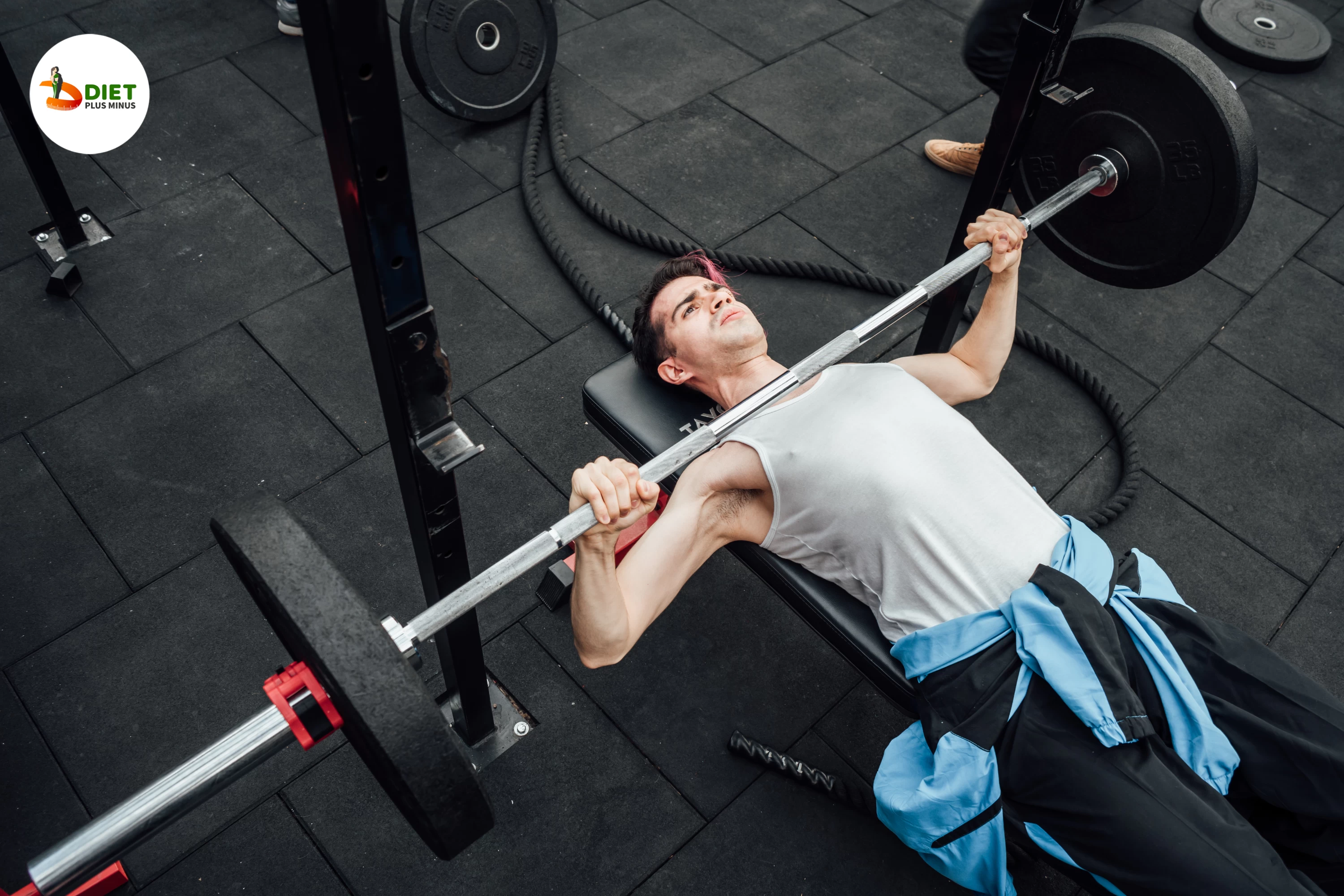Chest: Bench Press
Chest: Bench Press
Bench presses work chest muscles. It's popular with bodybuilders and fitness enthusiasts because it builds upper body strength and size. The bench press works the pectoralis major, the largest chest muscle. With a barbell above you, you bench press. Lift the bar from its rack and lower it to your chest before pushing it up towards the ceiling. This exercise works best when you keep your elbows close to your sides and use proper form.
Different bench press variations target different chest muscles. In contrast to decline presses, incline bench presses work the upper chest. A well-rounded chest workout will help you reach your fitness goals.
Benefits of Bench Press
Bench press is a great chest-strengthening exercise. This exercise boosts upper-body strength and power. It targets the pectoralis major muscle, which is used for throwing a ball and pushing heavy objects.
Bench press balances back and chest muscles, improving posture. A strong chest helps you sit at a desk or carry groceries properly. Bench press stresses bones, which builds bone density. Bench press should be done correctly to avoid shoulder and back injuries. Beginners should start with lighter weights and gradually build strength. Bench press can improve your health.
Equipment Needed
Bench pressing requires certain gear. A good bench comes first. The bench should be sturdy and adjustable for different workout positions. Flat chest presses can be done on a flat bench, but incline and decline presses require an adjustable bench.
Barbells are essential next. Your strength and fitness level should determine your weight. Heavy weights may injure you or ruin your form. Olympic plates are needed to load your barbell. Lifting weights requires different sizes of this equipment. With these tools, you can build a solid chest press foundation!
Correct Form
Bench press technique is crucial. Proper form targets the right muscles and reduces injury. Bench presses require stability. Start with flat feet, an arched back, and retracted shoulder blades.
Hold the barbell slightly wider than shoulder-width apart and slowly lower it to your chest. Push up with your chest, elbows tucked in at 45 degrees. Avoid arching or lifting off the bench to avoid shoulder and lower back strain. Finally, inhale deeply before lowering the barbell and exhale forcefully when pushing up. Start with light weights until you feel confident enough to gradually increase resistance. Proper form takes practise.
Increasing Weight
There are several ways to bench press more. Start with progressive overload by gradually lifting more weight. This challenges and grows muscles. To maximise reps, use proper form and technique. Nutrition helps bench press weight. Eat enough protein and calories to build muscle. Creatine and beta-alanine supplements can boost workout strength and endurance.
Last, rest and recover. Allow your muscles to repair and grow between workouts. This may require rest days or workout intensity adjustments. Bench press weight can increase steadily with dedication and consistency.
Muscle Confusion
Bench presses are popular chest exercises. But doing the same bench press every week may plateau muscle growth. Muscle confusion occurs. Keep your muscles guessing by switching up your workout routine. Muscle confusion involves changing exercise, weight, reps, sets, and rest periods. Try dumbbell or incline bench presses instead of barbell bench presses every week. Change the weight or reps and sets each week.
Muscle confusion techniques like changing exercises and weights during workouts can help strength and muscle mass gainers break through plateaus. Thus, to get stronger, people should challenge their muscles with new stimuli while using resistance equipment like free weights or machines at the gym.
Conclusion
The bench press is a great chest-toning exercise. To avoid injury and maximise results, proper form and technique are essential. Start with lighter weights and increase as strength improves. In addition, incline or decline bench presses can target different chest muscles. Dumbbell presses are another option for variety and stabilisation.
Exercise progress requires consistency. Bench presses should be part of your chest workout at least once a week. Stretch before and after to avoid soreness. You'll get a stronger, more defined chest with dedication and patience.
In Short:
Steps involved:
-
Lay on the flat bench with your feet lying on the ground. Unrack thebar with straight arms.
-
Lower the bar to your mid-chest.
-
Raise the bar until you’ve locked your elbow. Repeat.
Do’s:
-
Keep your feet firm on the ground.
-
Maintain the natural arch of your body and keep your shoulder blades squeezed.
-
Keep your elbows close.
-
If going for a heavyweight set always keep someone for support.
Don’ts
-
Don’t grip the bar too wide as it can cause elbow injury.
-
Don’t relax and let the weight drop.
-
Don’t go for too heavyweights at the beginning of your set.

